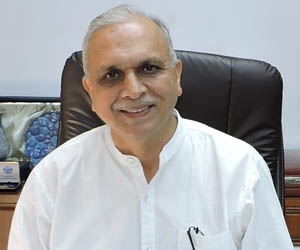India and the US concluded the 3rd edition of the ‘2+2’ ministerial dialogue in New Delhi on 27 October 2020. Defence Minister Raj Nath Singh, External Affairs Minister Jaishankar from the Indian side and Defence Secretary Mark Esper, Secretary of State Mike Pompeo from the US side participated in the dialogue. Five key agreements, including the all-important foundational agreement of Basic Exchange and Communication Agreement, were signed. The BECA is the fourth and the last of the enabling agreements. It will facilitate a much deeper level of defence cooperation in the future.
The geopolitical significance of the 2+2 dialogue cannot be overstated. The pandemic has created a great deal of political and economic uncertainty in the world. New power equations are emerging with China challenging the US on several fronts. The global economy has been seriously impacted by the coronavirus. Global supply chains have been disrupted. Multilateralism is in crisis. The backlash against globalisation has emerged. Deepening of strategic conversation between India and US on global, regional and bilateral issues is a sign of recognition that India and the US need each other during these uncertain times.
Indo-US defence cooperation began in the earnest with the signing of a framework defence cooperation agreement in 2006. Since then defence cooperation has deepened gradually. The dialogue is a major achievement of the security cooperation process which began 15 years ago. The 2+2 ministerial dialogue process which was initiated in 2018, has ensured high-level political attention to the decisions reached.
While the focus of the dialogue has been military-political coordination between the two countries, it has also served as a platform to discuss other important issues such as energy cooperation, connectivity, people to people contacts, science and technology cooperation.
From the Indian side, the importance of US investment in India’s ‘Make in India’ program in the defence sector was highlighted by the Defence Minister Raj Nath Singh. He underlined that US investment can help India become self-reliant in defence manufacturing. He hoped that the systems and equipment manufactured in India could also be utilised in the US defence forces. Thus, Atmanirbharata in the defence sector is a key aim of the 2+2 dialogue as far as India is concerned. Likewise, the US would also like India to buy US defence systems and platforms in increasing numbers and quantities.
As could be expected, the two sides focused on the Indo-Pacific region. The situation of the Sino-Indian border would have been discussed in the dialogue and in bilateral meetings. The US interlocutors publicly mentioned China while the Indian side was more cautious and chose not to mention China by name. However, the message was clear. Both sides want a Free and Open Indo-Pacific, and a rule-based order, and a multipolar Asia, not dominated by China.
Henceforth, the scope of Indo-US defence cooperation is likely to deepen further. India has decided to post a liaison officer in the Bahrain-based US Naval Forces Centeral Command. Likewise, a US officer will be posted at the International Fusion Centre For Indian Ocean Region in India. These cross-postings will enhance maritime security cooperation, increase maritime domain awareness and help in fine-tuning humanitarian assistance and disaster relief activities. Both sides have also agreed to deepen cooperation in cybersecurity, space, maritime security, and counterterrorism.
Questions have been asked why the dialogue could not be held after the US presidential elections. The fact is that there is a bipartisan consensus in the US on building strategic partnership with India, including security cooperation. Therefore, the decisions taken in the 2+2 dialogue are likely to hold even if there is a change in the US. As the new administration would take time to settle down, holding the dialogue now has avoided fresh uncertainties. At a time when India is locked in a tense military stand-off with China, the signing of the thethe BECA is certainly desirable from the Indian viewpoint.
Doubts and apprehensions about deepening security cooperation with the US have lingered on in this country for decades. Thanks to Chinese assertiveness and the continuing Sino-Indian military stand-off, India is today less hesitant to engage the US on security matters and also promote the groupings like the Quad. The signing of BECA is a sign of growing clarity in India’s foreign policy regarding where the national security challenges come from and how to handle them. Prime Minister Modi and President Trump can take the well-deserved credit for institutionalising military-political cooperation between the two countries.
(The paper is the author’s individual scholastic articulation. The author certifies that the article/paper is original in content, unpublished and it has not been submitted for publication/web upload elsewhere, and that the facts and figures quoted are duly referenced, as needed, and are believed to be correct). (The paper does not necessarily represent the organisational stance... More >>
Image Source: https://images.indianexpress.com/2020/10/22-1.jpg











Post new comment